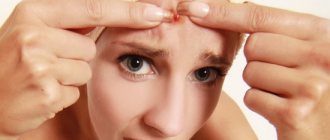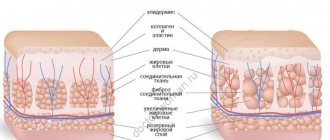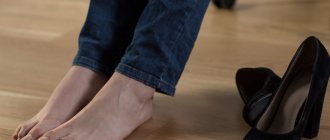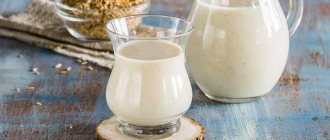Many people face the problem of dandruff. It looks unpleasant and causes other inconveniences: it makes your head itch, your hair very quickly becomes greasy, lifeless, and falls out. If dandruff appears, this indicates problems in the functioning of the whole body, and not just the scalp. Getting rid of dandruff can be difficult, especially if you solve this problem only cosmetically. The struggle must be comprehensive, only then will it be successful. Even at home, you can get rid of dandruff forever if you choose the right products and treatment methods.
Dandruff can be oily, dry or mixed. With dry dandruff, the flakes are easily separated from the scalp and hair and simply combed out. With oily skin, this is much more difficult: the scales are yellowish, greasy, and are very difficult to comb out.
Dandruff is an individual reaction of the body. This is not a disease that you can catch. Dandruff is not transmitted through contact. Any manifestations of dandruff are a signal of health problems. These can be skin problems, and general, systemic diseases, to which the scalp reacts with the appearance of flaking particles. Dandruff differs from ordinary peeling of the skin and skin renewal in the size of the scales - they are large, they are clearly visible, and if you lower and scratch your scalp with your fingers, they will begin to fall off.
Why does dandruff appear?
There are several reasons for dandruff:
- Insufficient or excessive adherence to hygiene rules. If you do not cleanse your head regularly and well, sebum accumulates on the skin, due to which it does not breathe and in which pathogenic microorganisms multiply, and dandruff appears. If you wash your hair too often or with aggressive products, the skin dries out, which also upsets the balance and develops pathogenic microflora.
- Using inappropriate skin care products. This leads to dry scalp, itching and detachment of skin scales.
- Using aggressive hair dyes. They dry out the skin and hair.
- Lack of vitamins and minerals, such as group B or retinol. Because of this, nutrients are not supplied to the skin and hair.
- Problems with blood circulation. Due to smoking or lack of a hat in cold weather, the capillaries narrow and the skin does not receive enough nutrition. Because of this, the skin dries out and does not fulfill its protective functions.
- Problems with the endocrine system, due to which the sebaceous glands do not work well.
- Fungal diseases that actively manifest themselves when immunity decreases.
- Diseases of the gastrointestinal tract.
- Some autoimmune diseases.
- Stress.
There can be several reasons for the appearance of dandruff at the same time. A trichologist will be able to determine the exact cause. You can also contact a dermatologist to make an accurate diagnosis and prescribe treatment. To get rid of dandruff, it is necessary to normalize the functioning of internal organs and choose the right care for the scalp and hair.
How to get rid of dandruff at home quickly and effectively
To cure dandruff, you need to correctly determine its type and then take action. Also, the action program will depend on the characteristics of the problem:
- On oily hair , excess oil appears first, then dandruff, and you need to work with the root cause. Usually there are inflammations, ulcers, and an unpleasant odor. The roots are untidy, there is no volume after washing.
- On a dry scalp there is less fat than necessary, the epidermis peels off in thin transparent layers, the scales are whitish. Hydration is a must.
- In men , hormonal imbalance and stress may be to blame. Try simple quick remedies first, if they are not effective, switch to heavy artillery.
- In women , in addition to hormones and stress, the love of beauty plays a role. Dry dandruff appears after coloring, chemicals, as a result of abuse of styling products, and a hairdryer.
- In children - look for the problem in nutritional errors, improper care. Changing shampoo, diet, and taking vitamins helps. Also make sure there is no lice - nits are confused with dandruff.
- In teenagers , hormones, poor diet, and poorly chosen shampoo are most often to blame. Taking vitamins, changing shampoo, wearing hats in cold weather solves the problem.
- With itching – this could be allergies, eczema, pediculosis, seborrheic dermatitis. For treatment to be effective, you need to undergo a comprehensive examination.
- With hair loss - appears with microsporia, weeping sores, may be hormonal in nature. It occurs in men and women; in the early stages it can be eliminated by various means; in advanced cases, a transplant will help.
- Dandruff growths - the appearance of scabs causes itching. The disease is contagious and causes a lot of trouble for people. The sores can burst with the formation of foci of infection.
As you can see, there are many types of dandruff, each with its own characteristics. For successful treatment, preliminary diagnosis is mandatory.
Where to start home treatment for dandruff
First of all, you need to understand that you won’t be able to get rid of flaking, itching and oiliness in one or two days. The fight against dandruff will take some time, in some cases up to six months.
What to do:
- wash your hair properly;
- give up hair dryers and straighteners for a while;
- give up hair styling products.
You need to wash your hair, and also rinse off all care and treatment products - only in warm water. Because of cold water, the capillaries narrow, and because of hot water, the sebaceous glands begin to work too actively. It is better to choose shampoos without fragrances or dyes; they should have a neutral pH. It is necessary to wash your hair as it gets dirty, if necessary - every day.
Causes of dandruff
Dandruff is flaked pieces of skin. They make hair untidy and indicate irregularities in care or internal problems of the body.
Main reasons:
- Metabolic disease. The body becomes vulnerable to the action of pathogenic factors.
- Endocrine disorders.
- Diseases of the digestive tract.
- Immune diseases.
- Disturbances in the functioning of the sebaceous glands.
- Improper hair care: use of aggressive detergents, use of inappropriate shampoos, conditioners and masks, hair dryer, too frequent coloring, especially with cheap products.
- Poor head hygiene - infrequent hair washing, improper combing, frequent touching with dirty hands, tight hairstyles.
- Heredity.
- Poor nutrition: lack of vitamins, microelements, too fatty foods.
- Bad tap water.
Dandruff can appear suddenly, for example, if a person is stressed. Most often, this problem occurs in men and young people.
Dandruff treatment
If the cause of dandruff is a fungus, it is necessary to use antifungal pharmaceutical drugs containing metronidazole, clotrimazole, ketoconazole. Masks and ointments with sulfur, zinc, ichthyol, birch tar and salicylic acid relieve discomfort, itching, and also normalize skin condition. To consolidate the results and improve your health, it is worth taking vitamin and mineral complexes, especially those created to improve the condition of the hair and scalp. But if you have problems with the gastrointestinal tract, taking such complexes should be agreed with your doctor.
What will help with severe dandruff on the head?
If there is a lot of dandruff, therapy should be combined. Apply:
- shampoos and conditioners - from a pharmacy or mass market, labeled “anti-dandruff”;
- lotions - you can make them yourself, rub in and not rinse off;
- sprays are the same lotions, but poured into a bottle with a spray bottle.
Place your bet on products with tar, selenium disulfide, zinc pyriothione, salicylic acid, panthenol, vitamin E. Plant extracts, natural substances - green tea, rosemary, lavender, St. John's wort, lavender. You can combine folk recipes with pharmaceutical drugs. And remember - it will take a lot of time to fight severe dandruff.
Folk remedies against dandruff
Home remedies can also be effective for dandruff. They disinfect the scalp, provide necessary nutrition, moisturize or dry. The disadvantage of all folk remedies for dandruff is that they are allergic. Before rubbing any product into your scalp, you need to conduct an allergy test: apply it to your wrist and wait a few minutes - up to half an hour. If the skin is not red or itchy, you can apply it to the scalp.
The most effective means are:
- tar soap - they wash their hair with it two to three times a week, it has an antiseptic effect, cleans and dries well, but has a specific smell;
- aloe - make a mask from the pulp, crushed in a blender, apply it to the head for half an hour, put on an insulating cap and additionally heat it with a hairdryer, then rinse with water;
- apple cider vinegar – it can be used to rinse your hair after each wash (a tablespoon per liter of water): it exfoliates dead skin cells and restores the balance of the scalp; You can also rub a couple of tablespoons of vinegar into the scalp and leave it on for 30 minutes, then rinse;
- aspirin - an exfoliating mask against dandruff on the head is prepared from it: 10 or 15 tablets are crushed, diluted in a small volume of water and such a paste is applied to damp skin, then massaged for several minutes, after which it is washed off;
- salt, soda and tea tree or peppermint oil - mix a tablespoon of salt with soda, drop a few drops of essential oil, apply to partings and massage, you can leave for 5 minutes, then rinse thoroughly.
- burdock oil - in addition to treating dandruff and seborrheic dermatitis, it can also be used to stimulate hair growth;
- Olive oil is an additional remedy for improving the condition of the scalp, moisturizing it and normalizing its balance; a mask of slightly heated oil is applied to the hair for half an hour or more, you can put on an insulating cap and warm it with a hairdryer.
Any herbal decoctions or herbal infusions should be used with caution for dandruff. Since they dry out the skin more often, which means dandruff can only get worse. During any hair wash, you can add a few drops of tea tree oil or other essential oils to your shampoo to stimulate blood circulation.
Types of dandruff
There are several types of dandruff, depending on the reasons for its appearance.
Dry dandruff. With this type, sebum is not secreted enough and is viscous. It is more common in young people who have not reached puberty.
At the same time, the skin is overdried, itching and peeling are observed. Dandruff is intense and fine.
Hair falls out a lot and is thin. The scales stick together, forming crusts, which causes a feeling of tightness and discomfort.
Oily dandruff. It appears when the glands work too intensely and the oiliness of the scalp increases. When the glands work this way, a film forms on the head, the pores close and stop breathing.
With this type of dandruff, large dandruff is formed. Hair falls out a lot and itches.
Mixed type. Signs of both types of seborrhea are observed. Treatment in this case is selected individually.
Seborrheic dermatitis. This is already an inflammation of the skin, which can manifest itself against the background of a weakened immune system after stress or taking medications. Red spots appear. Peeling is most intense on them. There is itching and scratching.
Skin diseases. Dandruff can also appear with skin diseases: different types of lichen, microsporia, eczema, psoriasis. In this case, it is rational to consult a doctor to prescribe effective treatment, otherwise there is a possibility of severe hair loss.
Specialized anti-dandruff products
Regardless of the cause of dandruff, using special series of products will help. They include various forms: shampoos, masks, pastes. They contain various substances, including those with antifungal and antiseptic effects. They cleanse, heal, and nourish the scalp.
The Sulsen series includes shampoo, paste, cream, oil based on selenium disulfide. These are natural products with a pH that matches the physiological balance of the scalp. You can use them in the same way as regular hair care products. But in addition to cleansing, they have a healing effect and allow you to quickly get rid of dandruff at home.
Traditional methods to fight dandruff forever
Traditional methods to get rid of dandruff help and are quite effective. Use rosemary oil, garlic, onion juice, tar soap or another recipe you like. Be sure to figure out where the problem came from and eliminate the root cause - otherwise the effect will be temporary.
Herbal rinses are gentler than onion masks, so use onion for treatment and chamomile for prevention - this is an example. If one method does not work, try others - sooner or later you will find your recipe.
A complex approach
If you use medicinal products, but continue to load your hair and scalp with incorrectly selected styling products and do not look for the cause of dandruff, then it may return. To defeat dandruff, you need to follow these rules:
- take care of your hair and scalp regularly and sufficiently;
- do not overload with styling products;
- do not abuse the hairdryer, sauna or steam bath, solarium, or exposure to the sun without protection;
- avoid stress, maintain a daily routine, rest;
- eat well, take vitamins;
- solve health problems whenever possible.
Dandruff is an unpleasant reaction of the body that can be dealt with. And the products from the Sulsena series will help with this, among other things.
Useful tips
To keep your skin always healthy, you need to follow simple rules:
- do not comb wet strands;
- use a hairdryer less often;
- do not apply shampoo to your curls, but first foam in your hands;
- wash no more than once every three days;
- avoid nervous and physical overload;
- regularly spend time in the fresh air;
- eat well.
Following these recommendations will help you understand how to get rid of dandruff on your head quickly and permanently. To forget about white flakes, it is necessary not only to use folk remedies, but also to strengthen the entire body. If you have any health problems, do not delay visiting your doctor. Maintaining immunity, good digestion, eliminating vitamin deficiency and hormonal imbalance - all this will reliably protect against problems and maintain a beautiful appearance.
Hair treatment with birch tar - recipes
To achieve maximum effect, it is best to prepare beauty potions yourself. Proven quality ingredients and compositions selected for yourself will give noticeable results after the fifth use.
Strengthening shampoo
To improve hair health and appearance, shampoo is prepared from baby soap. The finely grated block is mixed with tar in a one to one ratio. The mixture is stored wrapped in plastic and used every other day. Take a single piece and dilute it in red wine.
Action: prevention of hair loss, improvement of scalp condition, fight against oily seborrhea.
Getting rid of dandruff
- Tar water is prepared by mixing 5 grams of tar in 50 grams of clean water. After stirring, leave for two days. Liquid that has settled until transparent is used; sediment from the bottom is not needed.
- The resulting clear water is mixed with two egg yolks, then a glass of kefir is gradually poured in.
The resulting product is used to wash your hair instead of shampoo, or apply it as a mask to a cleansed head. Use twice a week for 2 months in a row, then break for 4 months. After the procedure, the amount of dandruff decreases, flaking and itching are reduced.
Mask for growth
To enhance the effect, you can combine tar with a proven remedy for hair growth: burdock oil, familiar to everyone from childhood.
22-23 grams of this oil are enriched with seven drops of tar, a few drops of pharmaceutical vitamin A are squeezed out. The mixture is mixed and left on washed, dried hair for an hour. To protect against drying out and keep warm, the head is wrapped in a layer of gauze and fabric.
The mixture is washed off with regular shampoo and rinsed with water and lemon juice to get rid of the odor. Use 2-3 times a week, no more than two months in a row.
Birch tar for psoriasis of the scalp
Psoriasis is an autoimmune disease, so tar should be used carefully, starting with tests on the bend of the elbow. Tar compositions are softened with additional components
To combat psoriasis spots on the head, the active ingredient is mixed with sour cream, the proportions are taken equally. To enhance the effect, add vitamin A and suitable oils
Carefully parting the hair, lubricate the affected areas with the resulting ointment, after half an hour, carefully rinse with regular shampoo and water with lemon juice.
Hair strengthening mask
Half a cup of honey is mixed with a teaspoon of tar, and a spoonful of burdock oil is added. The composition is applied to washed and dried hair, wrapped in film and insulated with a bath cap. The rich vitamin composition will complement the action. The hair is washed after an hour or two; for washing you need tar soap. It is advisable to lubricate the ends of the hair with balm for ease of styling and combing.
Hair loss mask
The roots of falling hair can be strengthened with a mask with calendula. The mask will relieve inflammation, strengthen the hair structure, and prevent early baldness.
You will need 4 grams of tar, 10-11 grams of castor oil and 10-12 ml of calendula tincture. The mixture is applied to the roots throughout the head or spotwise on balding areas for 3 hours. Use twice a year in two-month courses.
Anti-dandruff mask
The mask reduces the amount of dandruff and treats the symptoms associated with it: itching, tightness, excess oiliness. A mixture of a teaspoon of tar, two - castor oil and half a glass of vodka. For the mask, use 10 ml of the mixture, apply only to the roots of the hair. Do not wash or wet your hair before use. The mask is left on for up to three hours. Use once a week.
Signs of trichophytosis
Perhaps the most severe type of mycosis of the scalp is in the hair growth area, as a result of which the patient loses hair. Differentiate between superficial and deep forms.
With superficial trichophytosis, you can first detect flaky lesions and brittle hair at the base of the follicles, as a result of which the scalp is covered with black dots. On the remainder of the hair after breaking, you can notice a gray coating. The affected areas may become red, itchy, and swollen.
The deep form manifests itself as general malaise, hyperthermia; an infected person may notice swelling and tenderness of the lymph nodes, and a rash. Pink-red spots can be found on the scalp, rising above the surface of the epidermis. They have clear contours and a round shape. The most abundant peeling is observed along the contour of the spot. Less commonly, vesicles (bubbles with liquid) can form along the contour. Such lesions spread quite quickly, which is highly likely to lead to an abscess.









